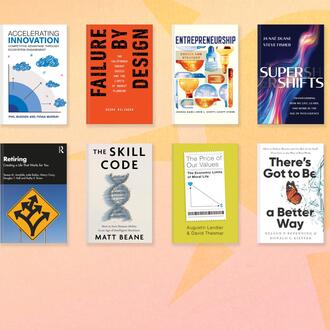Credit: Rob Dobi
In a 2018 interview with David Letterman, former President Barack Obama suggested that one of the biggest challenges in the U.S. is that people live in different news universes — some watch Fox News, others listen to NPR — and “don’t share a common baseline of facts.” The Republican compass points to a different truth than the Democratic compass.
It’s a persuasive description of today’s fractured politics. But is it, well, true?
“When we look at this question, we find that the average individual is actually pretty good at discerning what’s true from what’s false,” said a professor of applied economics at MIT Sloan. A new study he conducted with Andrea Prat from Columbia University found that partisan Republicans and Democrats distinguished real news from fake news relatively accurately. Both parties, for the most part, operated in the same universe.
At the same time, the researchers found that many U.S. citizens are not confident in their ability to tell what’s true from what’s false. The biggest determinant of that confidence was socioeconomic background, the study found: People who were older, male, and white and had a college education or earned more than $60,000 annually were more likely to confidently recognize true news stories.
“Socioeconomic variables — age, gender, income, education, race — still determine who the informed and the uninformed are in America,” the authors write.
For the study, Angelucci and Prat collaborated with a group of journalists who determined the three most important news stories related to American politics in a given month. These stories were paired with fake news headlines that were either generated by the journalists or had actually been published online but had been confirmed as fake by the fact-checking website Snopes. The researchers then ran surveys in which they asked respondents to differentiate between true and false headlines and used the resulting data to quantify various socioeconomic and partisan determinants of news discernment.
The study found that 47% of the subjects confidently chose the true story, and 3% confidently chose the fake story. The rest were uncertain.
Partisanship mattered, but not much. Partisan individuals were about 2% more likely to correctly identify the true news story if it reflected well on their party. (This effect increased as time passed. When stories were five to eight weeks old, partisans were roughly 6% more likely to select the true news story if it reflected very favorably on their party.)
“Memory actually tends to make us more partisan; time’s passage skews our perception of truth toward our partisan preferences,” Angelucci said. “Still, the average person did well on this test, despite what people fear.”
Where discernment between true and false diverged far more dramatically was along socioeconomic dimensions — specifically, and in descending order of magnitude, based on age, education, gender, income, and ethnicity. The probability that someone over 52 years old would identify a real news story was 6 percentage points higher than for someone younger than 52 years old.
In the most extreme case, older, white, high-income, college-educated men were 25% more likely to correctly identify the true news story than young, low-income, minority women without a college education. This divide, Angelucci said, has the potential to create a negative feedback cycle.
Related Articles
“This latter group tends to be poorer with less access to education, and, for reasons that are complicated, they are also less involved in politics. They probably have bigger worries on their minds,” Angelucci said. “But because they’re less involved, politicians might pay less attention to them, which further exacerbates the problem. In this way, information inequality amplifies economic inequality.”
The researchers also found that undecided voters — also called pivotal voters, given that they are numerous enough to swing an election — tend to be less informed about politics. This makes them particularly susceptible to political misinformation campaigns. “They would be the least equipped to resist this kind of information,” Angelucci said.
The research provided cause for both hope and concern, he said. On one hand, the average survey participant was relatively well informed and capable of distinguishing political fact from fiction. Misinformation didn’t sort strongly along partisan lines, either, suggesting that the notion that Democrats and Republicans live in different realities is not entirely true.
On the other hand, “we see very real and intense political disagreement out there, so if this isn’t rooted in the information we believe, then I worry it’s something more fundamental,” Angelucci said. “We might disagree about the situation around us, but not because we have access to and consume and believe fundamentally different information. There is something much deeper in how we process things, which implies simply providing the truth won’t fix the problem.”
Read the study: Is journalistic truth dead?
Read next: MIT Sloan research about social media, misinformation, and elections



